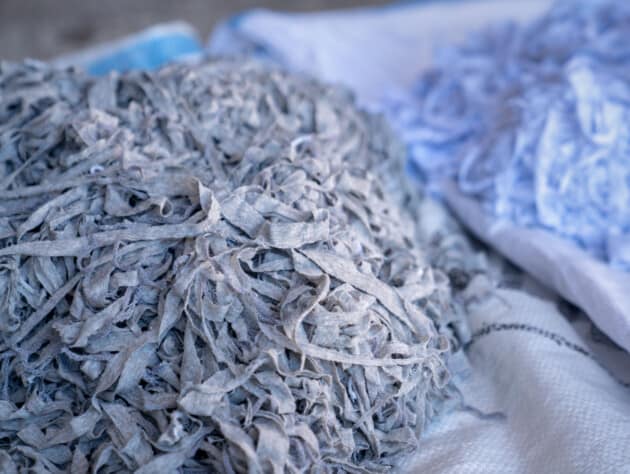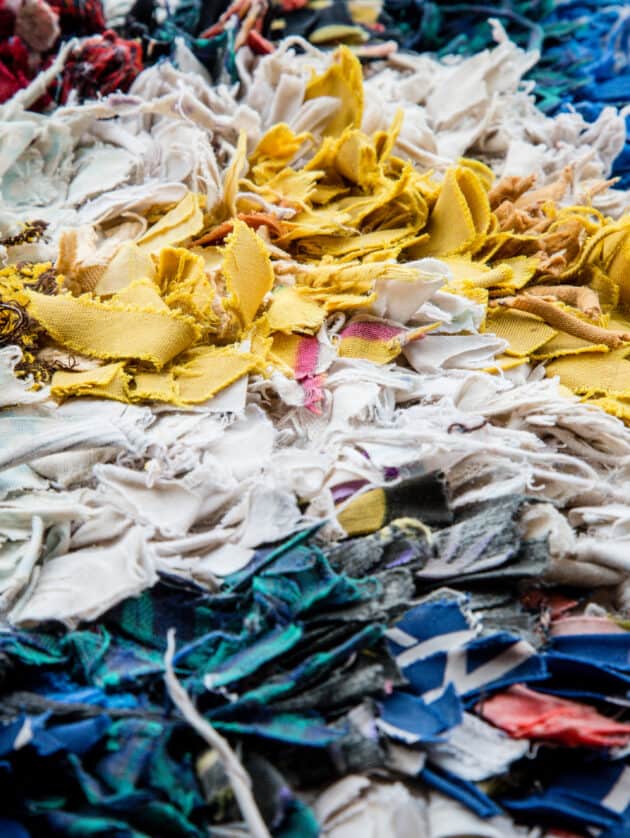The RCS and GRS are designed to boost the use of recycled materials
The Recycled Claim Standard (RCS) and Global Recycled Standard (GRS) set the criteria for the third-party certification of recycled materials and chain of custody. The GRS includes a higher (50%) minimum recycled content percentage and additional social and environmental requirements related to processing and chemical use.
We’re transitioning to the Materials Matter Standard and system
We’re unifying and harmonizing our current suite of standards into the Materials Matter Standard, a voluntary sustainability standard for the production and primary processing of raw materials used in the fashion, textile, and apparel industry. It represents a pivotal shift in connecting this work more directly to measurable outcomes for climate, nature, people, and animals.
The new standard sets detailed requirements for the production and primary processing of raw materials—from how land, water, and energy are used, to how working conditions, animal welfare, emissions, chemicals, and waste are managed. Its purpose is to provide a common language and shared direction for the industry, while recognizing the unique contexts of different material producers, processors, and the communities and landscapes they depend on.
The criteria for Materials Matter Standard were released on December 12, 2025, with the standard becoming effective on December 31, 2026 and mandatory from December 31, 2027. From that point, all Tier 4 organizations will need to complete their next audit to the new standard to maintain their certification.
For more information on the timeline, transition, and relevant information regarding mohair, please visit the Materials Matter Standard and standards transition pages.
Goals
Increasing transparency and assurance for recycled fibers
The RCS and GRS have three main objectives:
- Align definitions of “recycled” across different applications.
- Verify recycled content in products.
- Give brands and consumers a means to make informed buying decisions.
The GRS has additional aims:
- Reduce the harmful impact of production on people and the environment.
- Provide assurance that products are processed in a more climate-friendly way.
- Encourage higher proportions of recycled content in products.

HOW IT WORKS
Tracing recycled inputs from source to store.

DEVELOPMENT
Previous revisions and changes
Frequently Asked Questions
If you have a question not answered here, get in touch with us directly, and we’ll be happy to answer it for you.
Are Textile Exchange standards recognized globally?
Yes, all our standards apply globally. You can use our logos worldwide as long as you meet the requirements for logo use and claims.
Do you have translations of your standards available in other languages?
Visit the Document Library to see all standards documents. For some, translations are available.
What are the main differences between the GRS and the RCS?
The RCS and GRS are the same, except that the GRS is a more rigorous standard. In the GRS, there is a higher minimum content percentage (50%) and additional processing requirements (social, environmental, and chemical) that have to be met.
In the GRS, it mentions that the minimum content percentage is 20%, but in the Standards Claims Policy, it says the minimum is 50%. What does this mean?
You can use the GRS as a business-to-business tool for any products that contain at least 20% recycled content, but if you want to use consumer-facing labeling, the product must contain at least 50% recycled content.
My company is already certified to the GRS. Does this mean I am also certified to the RCS?
No, the GRS certification does not automatically include RCS certification. However, you can easily add the RCS to your existing certification by contacting your certification body. Typically, another audit is not necessary because the requirements of the RCS are covered by GRS as well. The best option is to request certification to the GRS and RCS at the same time.